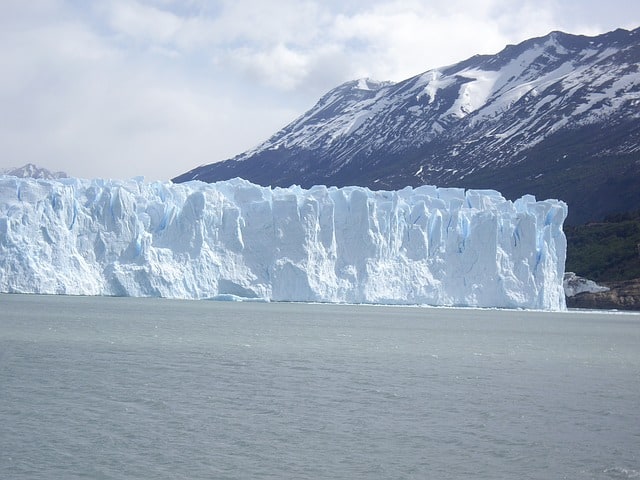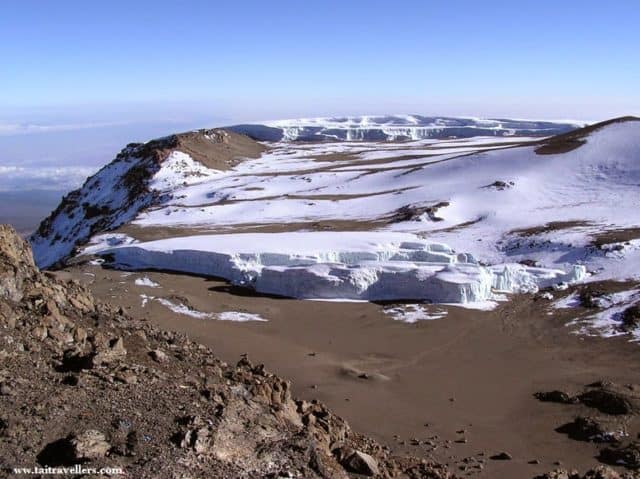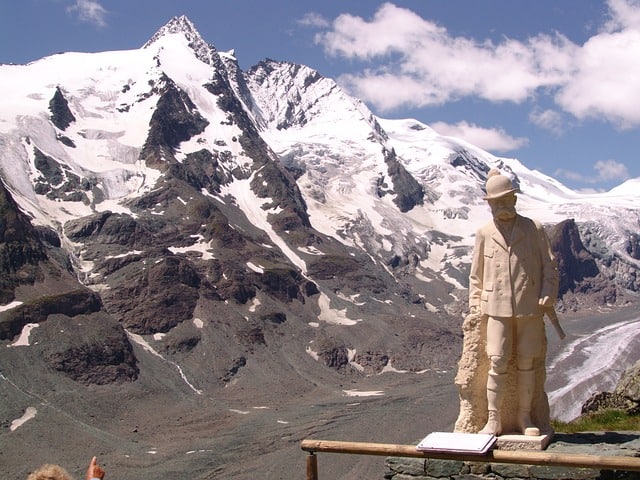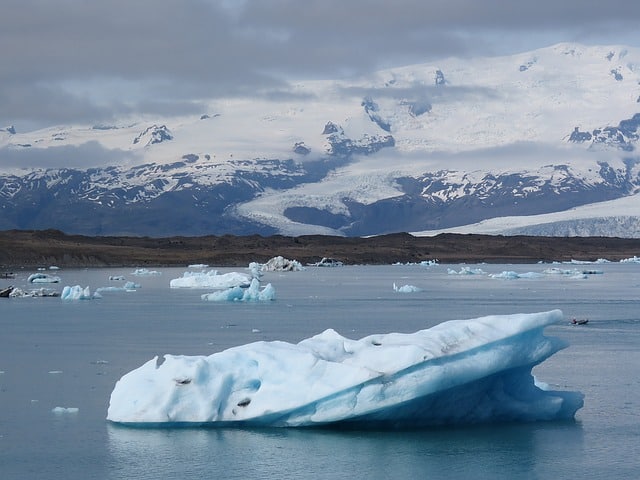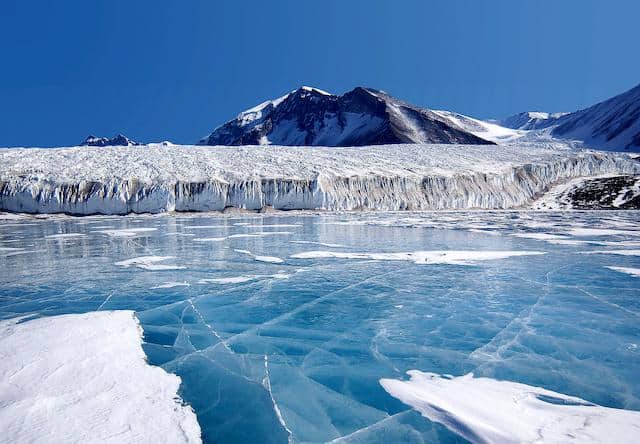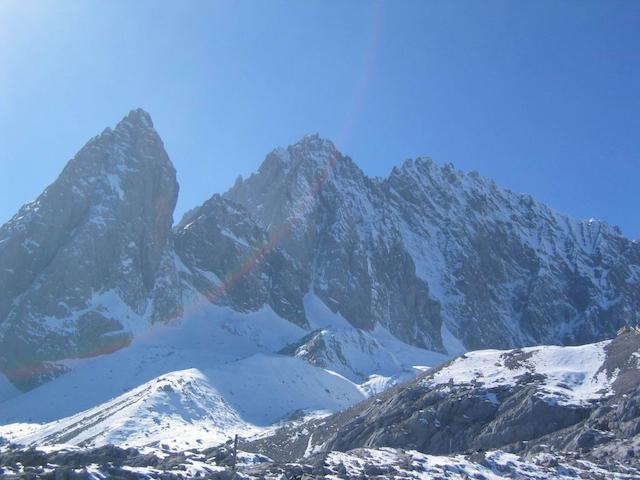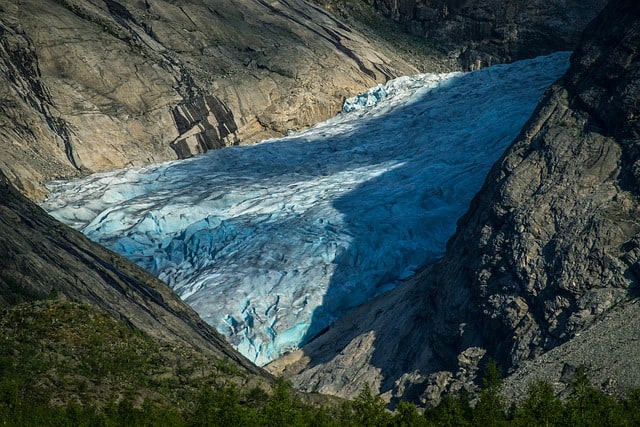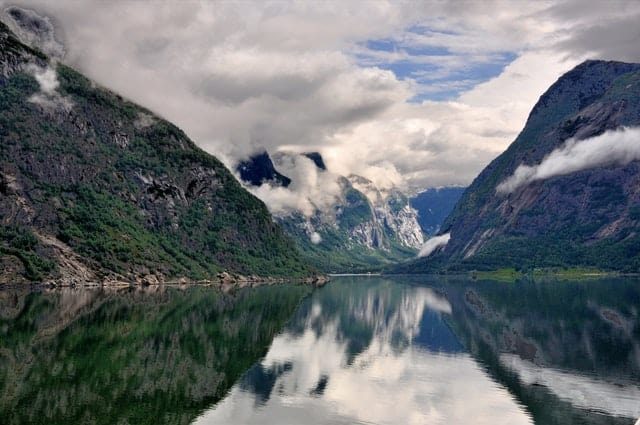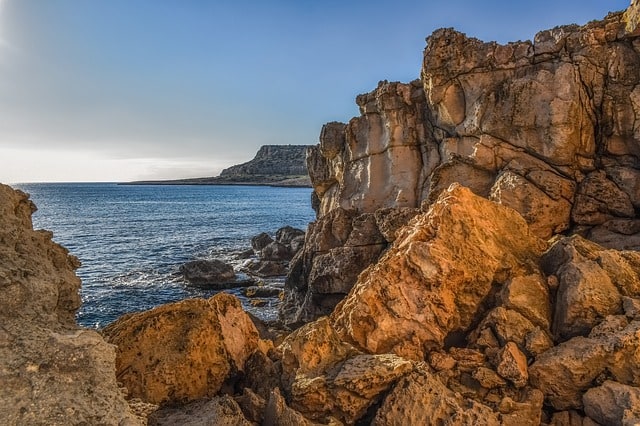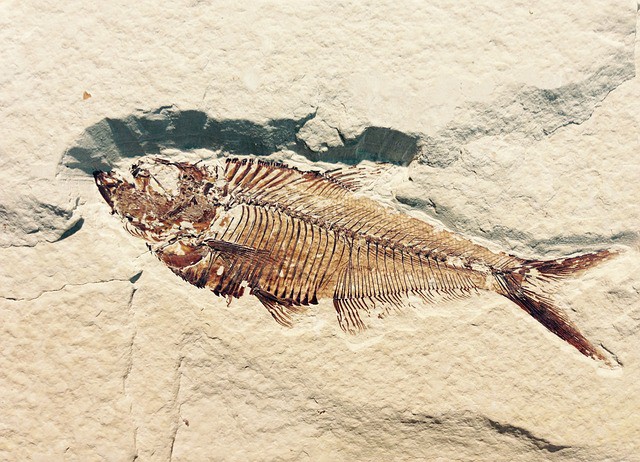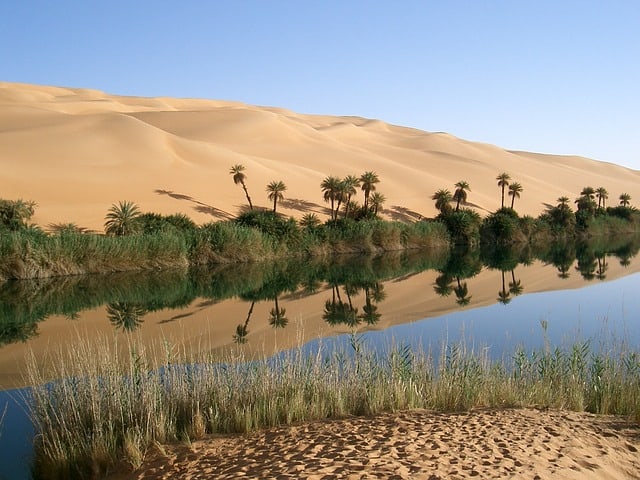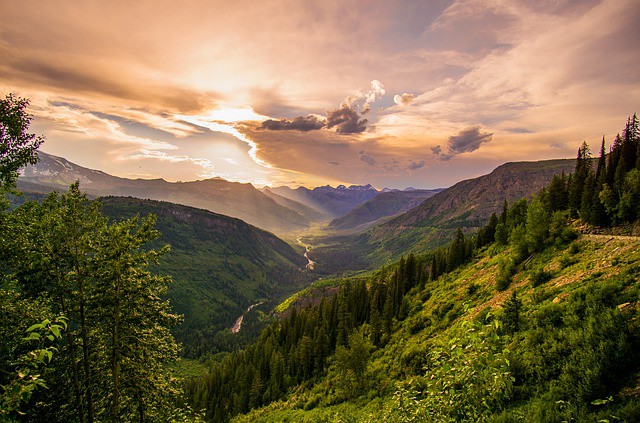11 Most Famous Glaciers in the World That Will Leave You Spellbound
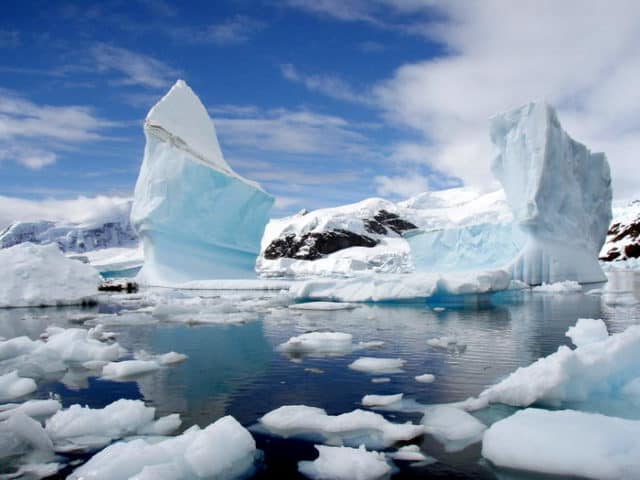
Glaciers are a natural wonder of the world. These are vast rivers of ice found on mountain tops or highlands and build up from an accumulation of fresh snow that never melts entirely. They form over the decades and often centuries.
Surprisingly some can be seen even from space. There are wrong notions that glaciers mean only polar bears or climber visitors. Any adventure lover can visit these mysterious creations of nature for an unforgettable experience. Read on to know about 11 most famous glaciers in the world.
11 Most Famous Glaciers in The World
1. Lambert Glacier, Antarctica
Width: 65km (60 mi)
Length: 400-800m (250 mi)
Thickness: 2500 m (1.5 mi)
Location: East Antarctica
Antarctica is home to hundreds of awe-inspiring glaciers including the world’s largest glacier, the Lambert Glacier. It is East Antarctica’s major glacier that holds the Guinness World Record for the largest glacier in the world.
These glaciers are also one of the fastest-moving ice streams of the world or “rivers of ice” flowing with frozen water from high to low elevation. Lambert Glacier flows from the Antarctic ice sheet draining about 8% of the ice sheet to the Amery ice shelf, a narrow inlet in East Antarctica. It lies in the extremely isolated part of Antarctica. Tourists rarely visit Lambert Glacier as the voyage become long and very expensive.
2. Perito Moreno Glacier, Argentina
Area: 250 km²
Province: Santa Cruz Province
Altitude: 300 m / 984 ft
Width: 5 km (3 mi)
Length: 30 km (19 mi)
Thickness: 170 m (560 ft)
Location: Argentina
Status: Advancing
Perito Moreno glacier is a major tourist destination worldwide and most popular amongst all the glaciers of Patagonia. It is 30 km (19 mi) in length and fed by the ice field of South Patagonian in the Andes. This glacier is 48 miles away from the town of El Calafate of Argentina and attracts adventurous tourists in huge number.
A fascinating part of exploring this glacier is witnessing the breaking of huge ice chunks from it and falling into the water of Lake Argentino. Visitors can take the closer view of the glacier on a small boat ride or helicopter ride available and even by hiking across the ice.
3. Margerie Glacier, Alaska
Width: 1.6 km (1 mile)
Altitude: 3,920m (12,860 ft)
Length: 33.8 km (21 mi)
Thickness: 110 m (350 ft)
Location: Glacier Bay National Park; Mount Root to Glacier Bay, Alaska
Terminus: Sea level
Status: Stable
It is a frequently visited famous tourist attraction in “Glacier Bay National Park and Preserve” in Alaska. This tidewater glacier is 34km (21 mi) in length. In 1925 it was declared a National Monument, a National Park and Preserve in 1980, a UNESCO World Biosphere Reserve in 1986, and a World Heritage Site in 1992. It has become stable, i.e., neither advancing nor receding.
4. Furtwängler Glacier, Tanzania
Area: 6 ha (hectare)
Altitude: 5,858 m (19,219 ft)
Thickness: 6 m
Location: Tanzania
Status: Retreating
A massive icecap which was once crowned the summit of Mount Kilimanjaro is now a little remain called Furtwängler Glacier found in Tanzania near the summit of Mount Kilimanjaro. The glacier was named after Walter Furtwängler, the fourth party to ascend to the summit of Kilimanjaro in 1912 with Siegfried König.
The glacial ice of about 82 percent on the mountain disappeared between 1912 and 2000 and remaining glaciers on top of the mountain expected to be gone by the year 2020.
5. Pasterze Glacier, Grossglockner, Austria
Area: 18.5 km²
Altitude: 2,500 m (8,202 ft)
Length: 8.3 km (5.2 mi) (2006)
Thickness: 120 m (400 ft)
Location: Grossglockner, Austria
Highest elevation: 3,453 m (11,329 ft)
Lowest elevation: 2,100 m (6,900 ft)
Status: Retreating
Pasterze Glacier is the longest glacier of around 8.4 kilometers (5.2 mi) in length in Austria and also in the Eastern Alps. However, the length is decreasing by approx. 10 m (33 ft) each year. It lies directly underneath the Grossglockner, the highest mountain of Austria.
It’s a famous destination being close to Zell am See, the popular lakeside resort. Centre for the visitors on the Grossglockner Strasse mountain road remains busy, and it’s also the easier one to trek.
6. Vatnajökull Glacier, Iceland
Area: 7,900 km² (3,100 sq mi)
Altitude: 1,594 m (5,230 ft)
Thickness: 380 m (1,250 ft) average
Location: Iceland
Status: Retreating
Vatnajökull Glacier is an incredible sight. The water glacier Vatnajökull or the Vatna Glacier is the largest as well as the most voluminous glacier in Iceland. It covers 8% and more of Iceland and considered amongst the largest in the area in Europe.
The icebergs that broke off Vanta glacier goes into the Jökulsárlón, the large glacial lake. There are about 30 outlet glaciers of Vatnajökull forming a mindblowing endless white landscape along the south ring road. These picturesque glacier tongues look fabulous and are easily accessible.
Although the conditions high on the main glacier top are extremely challenging, the hiking with a certified glacier guide and right equipment becomes an unforgettable experience.
7. Fox and Franz Josef, New Zealand
Length: Fox Glacier: 13 km (8.1 mi) and Franz Josef: 12 km (7.5 mi)
Altitude: 2,600 m/8,500 ft (Fox), 301 m/988 ft (Franz Josef)
Location: New Zealand
Status: Retreating
This pair of the temperate maritime glacier is unique. They are not on the high rocks of a mountain peak but descend from the Southern Alps to lower than 300 meters above sea level in the middle of the lush greenery of a temperate rainforest. Located in Westland Tai Poutini National Park on the West Coast of South Island of New Zealand, these are the most accessible glaciers to hike and for the glacier walk.
Fox Glacier was named after Sir William Fox, the then Prime Minister of New Zealand when he visited the glaciers in 1872. These are part of the World Heritage Site Park – Te Wahipounamu and are home to unique wildlife.
8. Biafo, Pakistan
Length: 63 km (39 mi)
Altitude: 4,192 m (13,753 ft)
Finding: Pakistan
Located on the Karakoram Mountains of Gilgit Baltistan, Pakistan, the Biafo Glacier meets the Hispar Glacier, 49 km in length at an altitude of 5,128 m at Hispar La creating the longest glacial system outside the Polar Regions. The Biafo Glacier is popular as the world’s 3rd longest glacier exterior to the Polar Regions.
This remote glacier is accessible through a long hike along the edge of Snow Lake. It involves very strenuous boulder hopping for several days, but the incredible view makes the trekking an unforgettable one. You can also see animals such as snow leopards, brown bears, and ibexes throughout the trek.
9. Canada Glacier, Antarctica
Altitude: 3,000 m (9,800 ft) and more
Location: Victoria Land, Antarctica
Terminus: Lake Hoare, Lake Fryxell
The Antarctic along with Greenland contains 99% glacial ice of the entire world. Out of numerous Antarctica’s glaciers, Canada Glacier is a notable one. This comparatively smaller glacier flows southeast towards the northern part of Taylor Valley in Victoria Land.
Surprisingly, there are less than 10 centimeters of snowfall in a year, and it is technically a desert ecosystem. It melts in the summer and feeds Lake Fryxell to the east and Lake Hoare to the west.
10. Yulong, Yunnan Province, China
Area: 11.6 km²
Province: Yunnan Province
Altitude: 4,680 m (15,350 ft)
Location: China
Status: Retreating
This glacier of Yulong Snow Mountain in southwestern China is one of the top tourist destinations of Lijiang and a significant water source of the region. According to the report released by the Frigid and Arid Zone Environment and Engineering Institute of the China Academy of Sciences, glaciers are quickly disappearing due to global warming.
Yulong’s glaciers are crucial to the ecology of the surrounding area. Reaching the final observation deck is tuff because of the real high location of the glacier.
11. Jostedalsbreen Glacier, Western Norway
Area: 487 km²
Altitude: 1,957 m/6,421 ft (Highest Point)
Thickness: 600 m (2,000 ft)
Location: Western Norway
Length: 60 km (37 mi)
The largest glacier in continental Europe is Jostedalsbreen Glacier in Western Norway’s Sogn of Fjordane County. Jostedalsbreen covers the municipalities of Luster, Sogndal, Jølster, and Stryn. The highest peak is Lodalskåpa with an altitude of 2083 m.
Sources:

